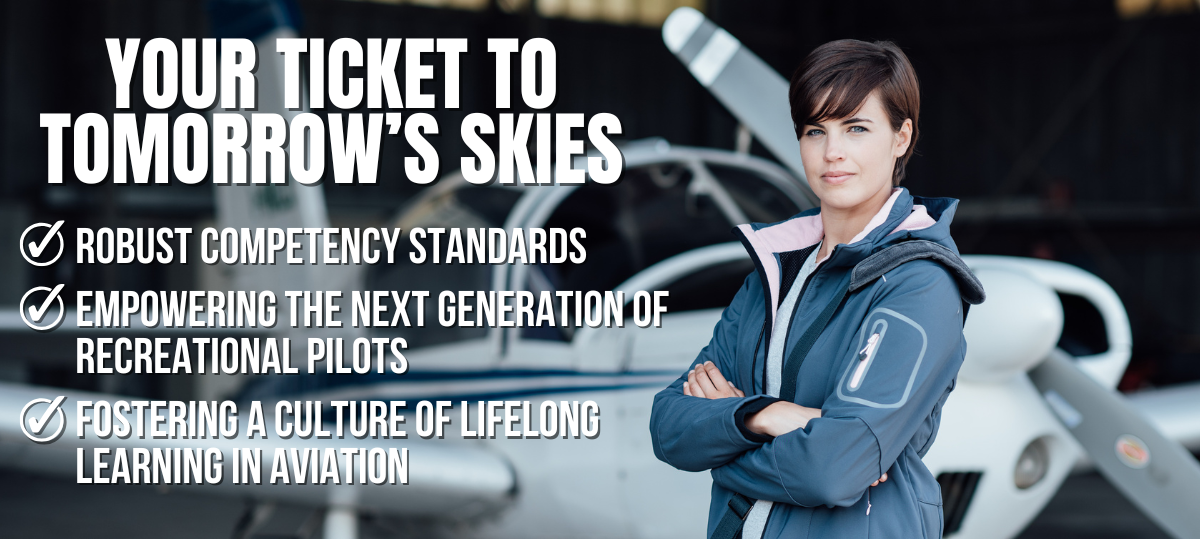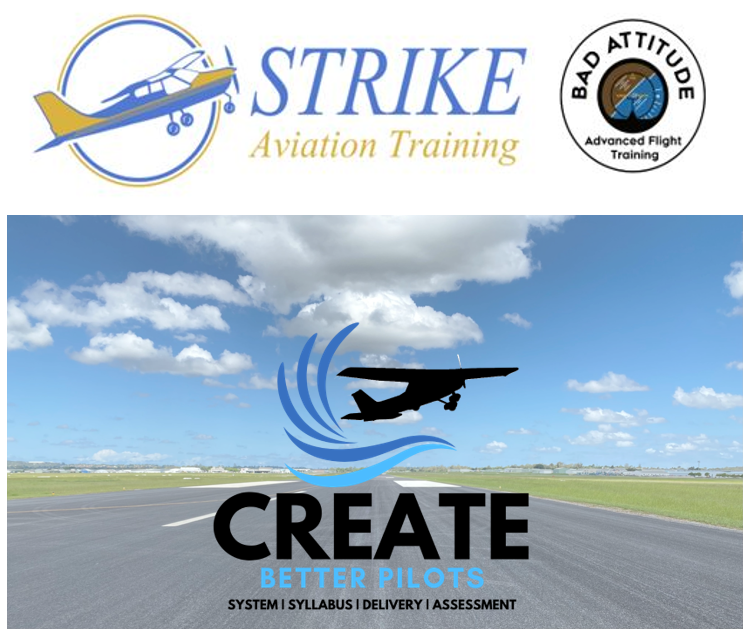Welcome to Week 3 of National Safety Month 2024
Proudly Sponsored by:
Karen and Paul are proud to have assembled a team of career flight instructors who are passionate about helping YOU become the best pilot YOU want to be. Strike Aviation Training provides both RA and GA pilot training in a relaxed yet professional environment that delivers a “family feel”.
Whilst our training delivers the appropriate RA and GA syllabus, we do NOT “tick and flick”. Our focus is to ensure that pilots are safe and competent, which makes them more confident.
Strike Aviation Training is identified by CASA and RAAus as “Subject Matter Experts” who are working together with other passionate world-leaders in the development of Loss of Control Prevention Training and Flight Instructor growth, to make the flight training experience more effective.
We do not simply teach people to fly – we provide learning opportunities for, understanding the theory, getting your hands dirty with pilot maintenance, becoming informed about the responsibilities of aircraft ownership and developing good airmanship. We develop passionate aviators.
You can “learn to fly” anywhere – but if you want to be more than a pilot, you can become an AVIATOR at Strike Aviation Training. You don’t have to, it is totally up to you.
Livestream
Tune in Wednesday, 16 October at 6:30pm (AEDT) as Marty Peters (Head of Flight Operations), Neil Schaefer (Head of Training Development), and Paul Strike (CASA HOO, RAAus Senior Instructor and Instructor Trainer) explore the concept of competency in flight training. They’ll discuss what true competence entails, how instructors can accurately assess it, and effective methods for documenting competency in their students.
Promoting safety through effective communication and competency
Effective communication is the cornerstone of aviation safety. From the cockpit to the control tower, clear and precise exchanges of information can mean the difference between a routine flight and a potentially hazardous situation.
While flight instructors and cfis are at the forefront of instilling these practices, the principles of safe communication are valuable for everyone involved in aviation – from student pilots to seasoned professionals. By understanding and adopting these practices, we can all contribute to a safer flying environment.

The power of clear communication
In aviation, the importance of effective communication cannot be overstated. Using standard phraseology and clear, concise language is essential in every interaction, whether it’s with a controller, passengers, or the forever important instructor/student dynamic. It’s equally important to create an environment where everyone feels comfortable speaking up about safety concerns.
Don’t hesitate to ask for clarification if you’re unsure about an instruction or situation. Remember, effective communication is a two-way street that involves both speaking clearly and listening actively. By fostering open dialogue and active listening, we create a safer, more efficient aviation community.
Expecting the unexpected
Scenario-based training is a powerful tool used in flight instruction, but its principles are valuable throughout one’s flying career. By regularly challenging ourselves with “what-if” scenarios, we can develop and maintain critical thinking and decision-making skills that are crucial in unexpected situations.
Embrace these mental exercises as opportunities to anticipate potential issues and think through your responses. Stay current with emergency procedures and consider how you’d handle various situations in your regular flying environment. Sharing experiences and discussing how you’ve handled challenging situations enhances everyone’s preparedness and safety awareness.
The value of thorough debriefs
Debriefs are not just for training flights; they provide an invaluable opportunity for reflection, learning, and improvement that benefits aviators at all experience levels. After each flight, take time to reflect on your performance, communication, and decision-making. Consider what went well and what could be improved.
If flying with others, engage in mutual debriefs to benefit from different perspectives. By embracing a culture of continuous improvement and approaching feedback as an opportunity to enhance safety and skills, we contribute to the overall safety of the aviation community.
Embedding safety culture in every flight
A robust safety culture should permeate all aspects of aviation. It starts with understanding the reasoning behind safety practices and not just following checklists, but internalising their importance. Consistently demonstrate good habits like thorough pre-flight checks, conservative decision-making, and regular skills refreshers.
Be a safety role model, regardless of your position in the aviation community. Contribute to a positive safety culture by sharing safety information, attending safety seminars, and always prioritising safety over convenience or schedule pressures. Remember, every decision we make in aviation has the potential to impact safety.
The courage to speak up
Creating an environment where everyone feels empowered to voice safety concerns is crucial. This principle extends from flight training to all aviation operations. If something doesn’t feel right, say so. Use assertive communication techniques when you need to voice a concern.
Foster an environment where Pilots, passengers, and other members feel comfortable raising concerns.
Remember, a safety observation from anyone could be the key to preventing an incident. It’s important to praise those who speak up about safety issues. By supporting a “just culture” that values safety reporting, we encourage ongoing vigilance and communication about potential hazards.
Safety is a collective responsibility that rests on the shoulders of every individual involved in flying. The lessons emphasised in flight instruction – clear communication, scenario-based thinking, thorough debriefs, a pervasive safety culture, and the courage to speak up – are valuable for everyone in aviation.
Whether you’re logging your first solo hours or have thousands of hours in your logbook, you play a crucial role in maintaining and enhancing aviation safety. By embracing these principles, we can all contribute to a safer sky for everyone.
Remember, in aviation, learning never stops. Stay curious, stay engaged, and always prioritise safety. Every flight is an opportunity to reinforce these practices and contribute to the safety of our shared airspace. Together, we can ensure that every flight is a safe flight.
Death by flight instructor
In the aftermath of a tragic aviation accident, a US based flight instructor has sparked a crucial dialogue about what it means to be a flight instructor. This incident has highlighted the complexities of human factors in flight training; from psychological and physiological to social elements that influence pilot performance beyond technical skills. While many instructors uphold high standards, this event serves as a stark reminder of the profound impact instructors can have. It emphasises the need for all in the industry to reflect on their role in shaping not just the abilities, but also the judgment and decision-making of future pilots. The instructor’s message underscores that while most in the profession are dedicated and responsible, there’s always room for the aviation community to reinforce its commitment to safety and professional excellence.
RAAP – ASSESSING COMPETENCY STANDARDS

Prepare for a RAAPid enhancement in pilot competency standards. The Recreational Aviation Advisory Publication (RAAP) on assessing competency standards is nearing release, bringing additional clarity and consistency to our competency-based training.
This comprehensive guide aligns RAAus standards with CASA Part 61 PPL-A tolerances, offering valuable insights for students, RPC holders, and Instructors alike. From providing clarity in the training process to supporting ongoing skill development, the RAAP aims to further strengthen Recreational flying.

PARTICIPATE TO WIN!
Watch the livestream to find out the codeword to enter our Week 3 prize draw!
YOU COULD WIN ONE OF THE FOLLOWING PRIZES*
FIRST PRIZE: LOC Flight Instructor Course
Sponsored by Strike Aviation Training
Valued at $1,899
SECOND PRIZE: Schedule 8 Pilot Maintenance Training Course + FLYTE Sunglasses
Sponsored by Strike Aviation Training and FLYTE
Valued at $856
THIRD PRIZE: FLYTE Sunglasses
Sponsored by FLYTE
Valued at $245

*Applicants must hold a current Flying Membership or Non-Flying Membership in order to win the first prize.
*Terms and Conditions apply
